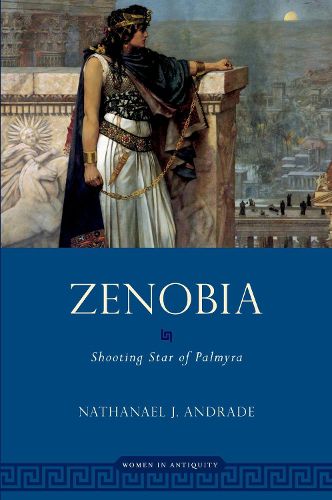Readings Newsletter
Become a Readings Member to make your shopping experience even easier.
Sign in or sign up for free!
You’re not far away from qualifying for FREE standard shipping within Australia
You’ve qualified for FREE standard shipping within Australia
The cart is loading…






Hailing from the Syrian city of Palmyra, a woman named Zenobia (also Bathzabbai) governed territory in the eastern Roman empire from 268 to 272. She thus became the most famous Palmyrene who ever lived. But sources for her life and career are scarce. This book situates Zenobia in the social, economic, cultural, and material context of her Palmyra. By doing so, it aims to shed greater light on the experiences of Zenobia and Palmyrene women like her at various stages of their lives. Not limiting itself to the political aspects of her governance, it contemplates what inscriptions and material culture at Palmyra enable us to know about women and the practice of gender there, and thus the world that Zenobia navigated. It reflects on her clothes, house, hygiene, property owning, gestures, religious practices, funerary practices, education, languages, social identities, marriage, and experiences motherhood, along with her meteoric rise to prominence and civil war. It also ponders Zenobia’s legacy in light of the contemporary human tragedy in Syria.
$9.00 standard shipping within Australia
FREE standard shipping within Australia for orders over $100.00
Express & International shipping calculated at checkout
Hailing from the Syrian city of Palmyra, a woman named Zenobia (also Bathzabbai) governed territory in the eastern Roman empire from 268 to 272. She thus became the most famous Palmyrene who ever lived. But sources for her life and career are scarce. This book situates Zenobia in the social, economic, cultural, and material context of her Palmyra. By doing so, it aims to shed greater light on the experiences of Zenobia and Palmyrene women like her at various stages of their lives. Not limiting itself to the political aspects of her governance, it contemplates what inscriptions and material culture at Palmyra enable us to know about women and the practice of gender there, and thus the world that Zenobia navigated. It reflects on her clothes, house, hygiene, property owning, gestures, religious practices, funerary practices, education, languages, social identities, marriage, and experiences motherhood, along with her meteoric rise to prominence and civil war. It also ponders Zenobia’s legacy in light of the contemporary human tragedy in Syria.